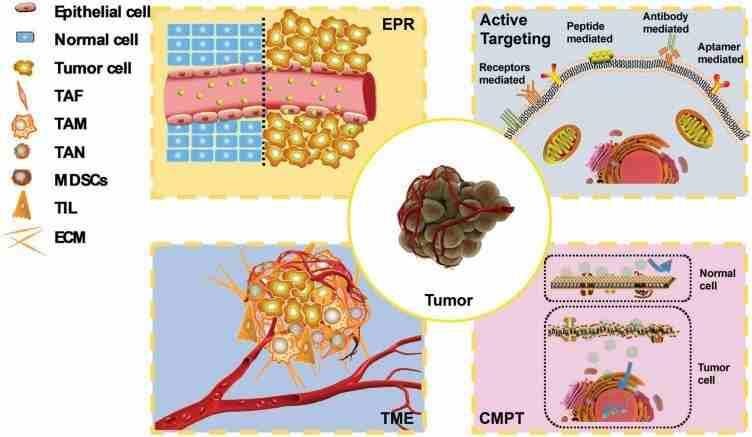Fluorescent nanoparticles (FNPs) have the advantages of strong signal intensity, photobleaching resistance, tunable fluorescence emission, high sensitivity and good biocompatibility, which are the driving force of their application in cancer diagnosis and treatment. In addition, the large surface area and easy modification of FNPs provide a platform for the design of multifunctional nanoparticles (MFNPs) for tumor targeting, diagnosis, and treatment. In order to achieve better targeting and therapeutic effects, it is necessary to understand the properties and targeting mechanisms of FNPs, which are the basis and key to the targeting design of nanoparticles. This paper reviews the widely accepted and applied targeting mechanisms, such as enhanced permeability and retention effect (EPR), active targeting and tumor microenvironment (TME) targeting. In addition, a newly discovered targeting mechanism called membrane permeability targeting (CMPT) was introduced, which increased the tumor targeting rate from less than 5% of the EPR effect to more than 50%. This paper also summarizes a new design strategy, which provides hope for future clinical design targeting NPs/nanomedicines. Targeting mechanisms and design strategies will provide new insights and ideas for targeting design, accelerate the development of precision medicine, and contribute to the treatment and early diagnosis of cancer.

https://doi.org/10.1002/adma.201902409